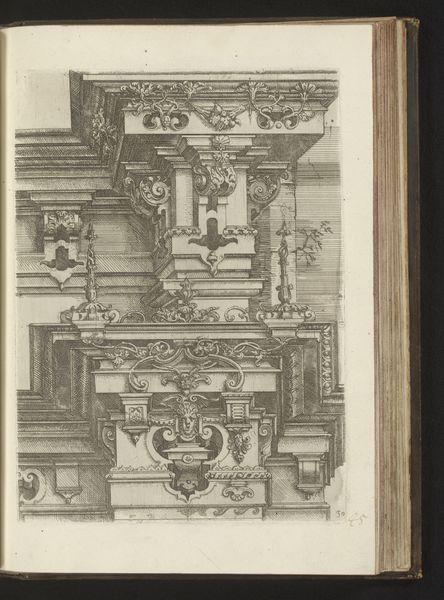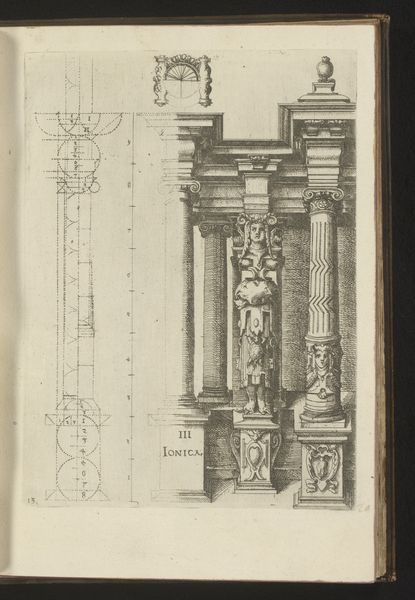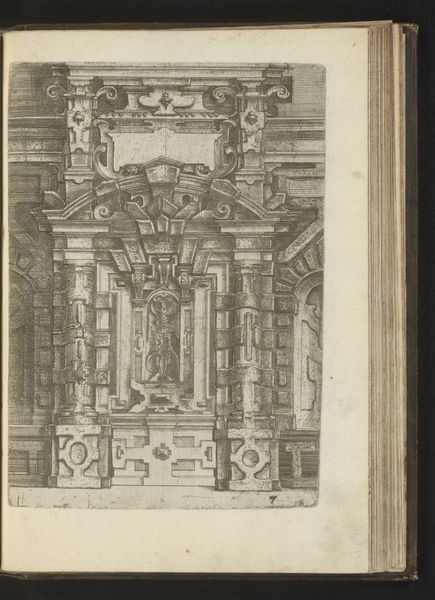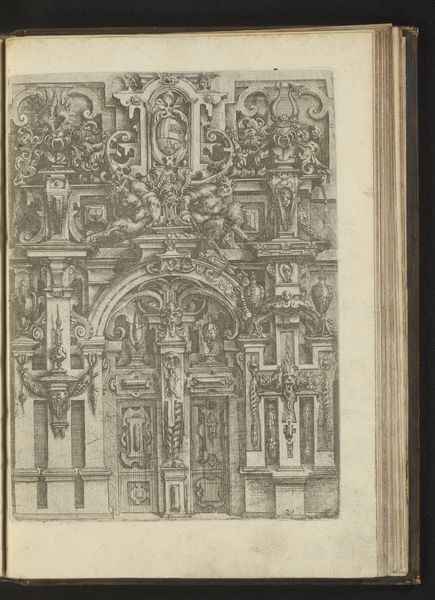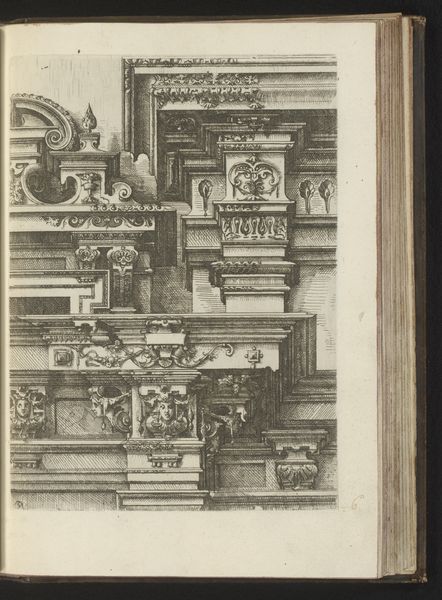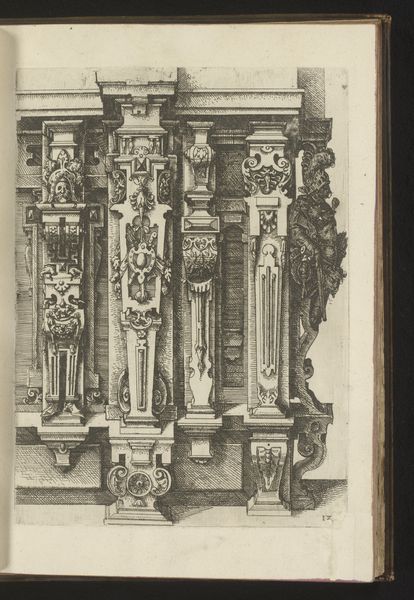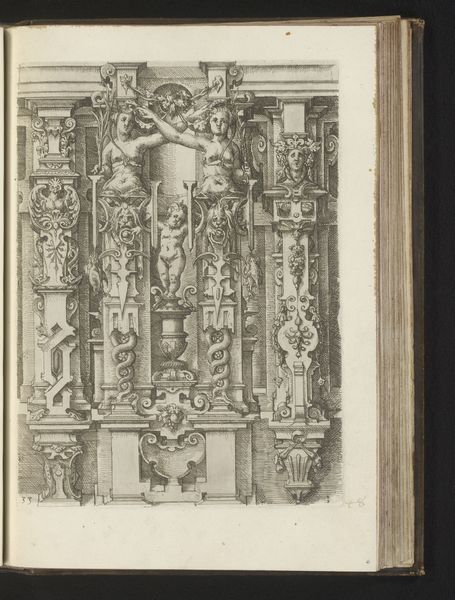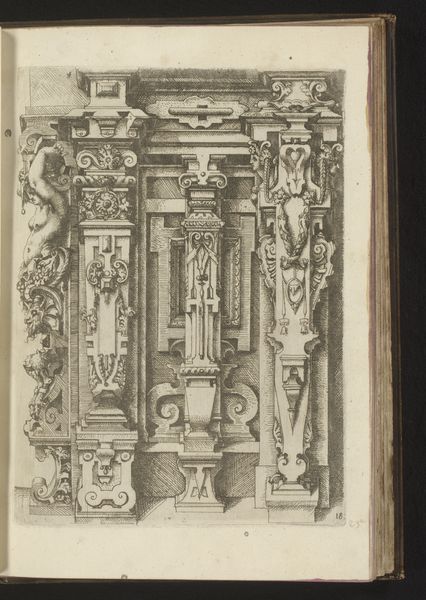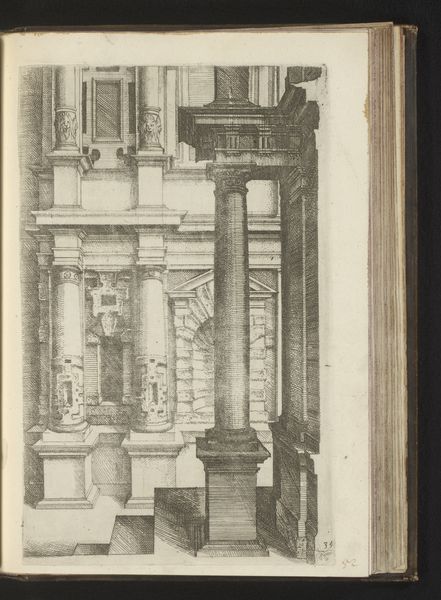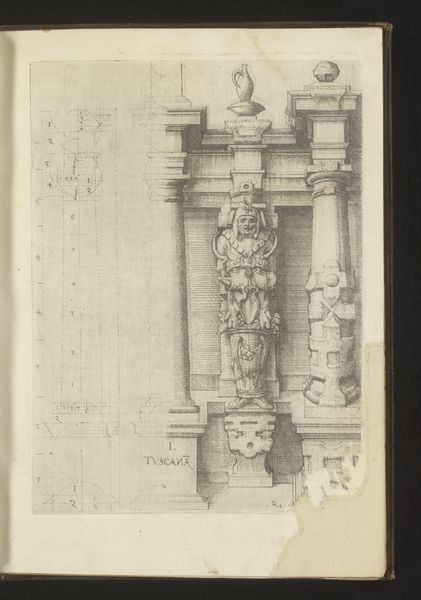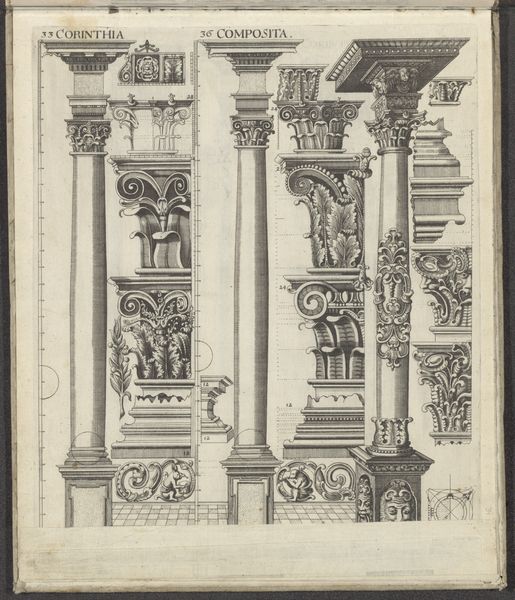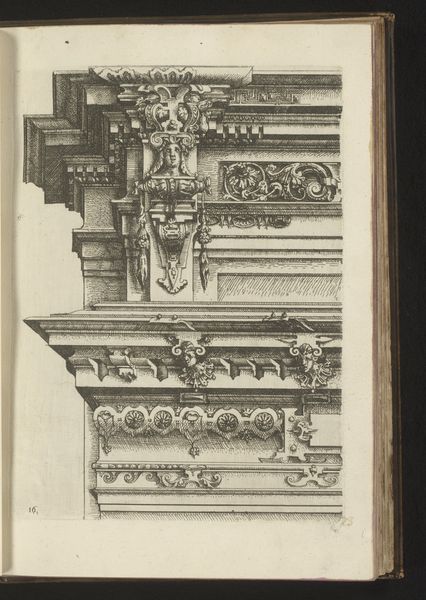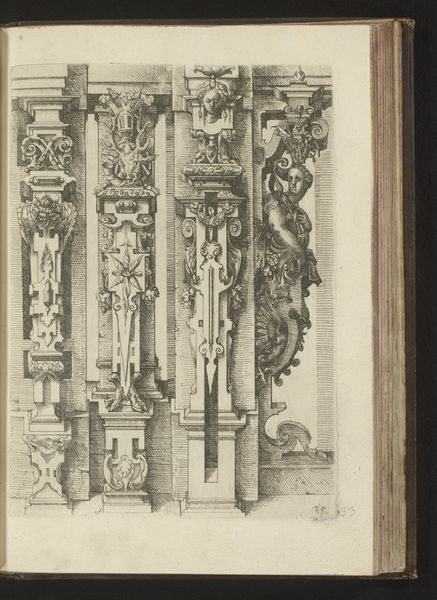
drawing, ornament, pen, engraving, architecture
#
drawing
#
ornament
#
11_renaissance
#
geometric
#
column
#
pen-ink sketch
#
pen
#
engraving
#
architecture
Dimensions: height 251 mm, width 178 mm
Copyright: Rijks Museum: Open Domain
Curator: This drawing, titled "Vier pilasters met rustica waarvan één van opzij gezien", was created by Wendel Dietterlin between 1593 and 1595, rendered in pen and engraving. Editor: They strike me as incredibly severe, yet meticulously planned, like blueprints for some kind of… imposing power structure? Curator: Well, architectural drawings in this period, particularly those showcasing rustication like this, served multiple purposes beyond mere construction. The rustica connects it to a classical context, and so we need to acknowledge the social contexts informing the re-appropriation of classical artistic and philosophical styles, in order to then reinforce existing European systems of governance, right? The pilasters would have been signifiers of status. Editor: Absolutely, we see these as signals of authority – pilasters in practice were laboriously hewn from stone. The engraving then disseminates those signals widely. The means of reproduction becomes quite critical, right? Consider the audience, too: fellow artisans or noble clients? Curator: I agree, but also important is that their very style evokes associations with Renaissance ideals. As ornamental architecture becomes increasingly intertwined with expressions of masculine, political power during the Renaissance, the role of ornament evolves to communicate ideology and dominance, a narrative inseparable from constructions of gender and social hierarchy. Editor: Certainly. It’s fascinating how such an image is so self-contained. Dietterlin emphasizes line, tone, material – all elements made present through process of engraving. Curator: Examining the labor inherent in creating and replicating these pilaster designs sheds light on societal values regarding craftsmanship and the construction industry's role within early modern European economies. The artistic processes weren’t detached from daily life; instead, art was made as an exercise of power and identity. Editor: In closing, then, our perspectives complement each other, showing how an image simultaneously displays material making and encodes layers of socio-political context. Curator: Indeed, analyzing the image with consideration for both materiality and power allows for a fuller comprehension of the historical role of architectural representation.
Comments
No comments
Be the first to comment and join the conversation on the ultimate creative platform.
